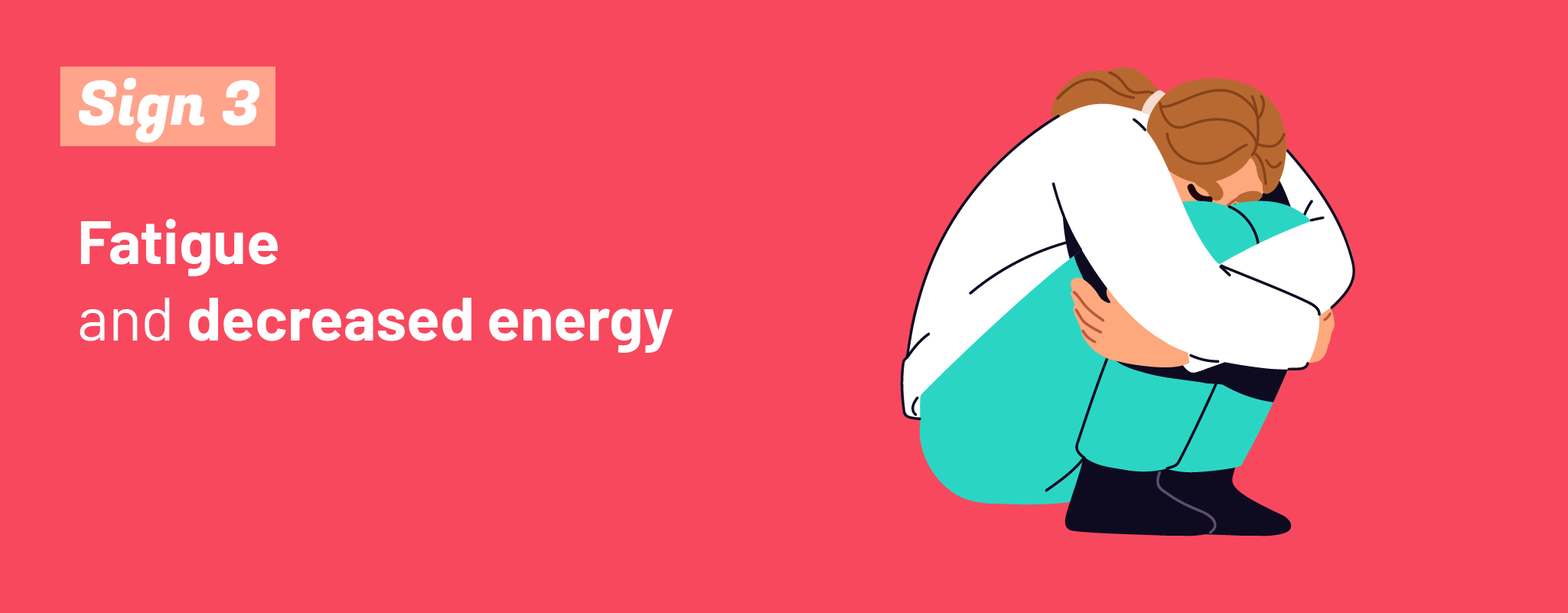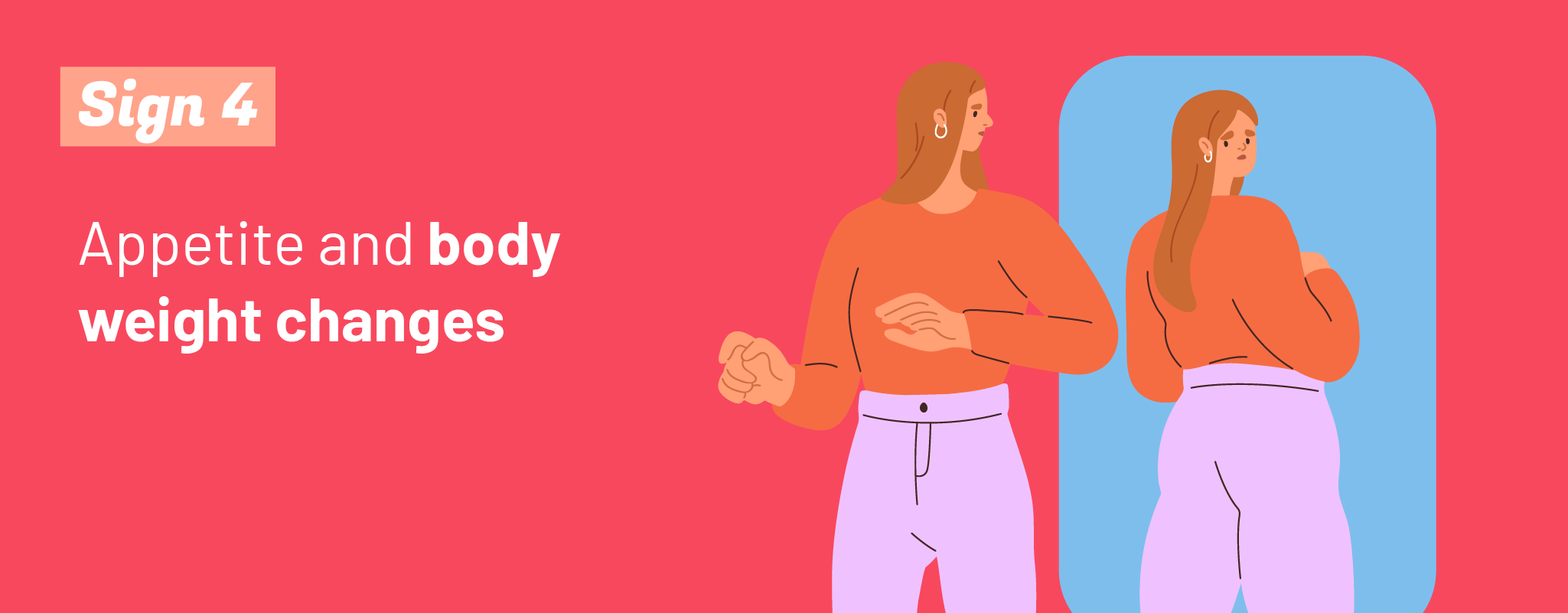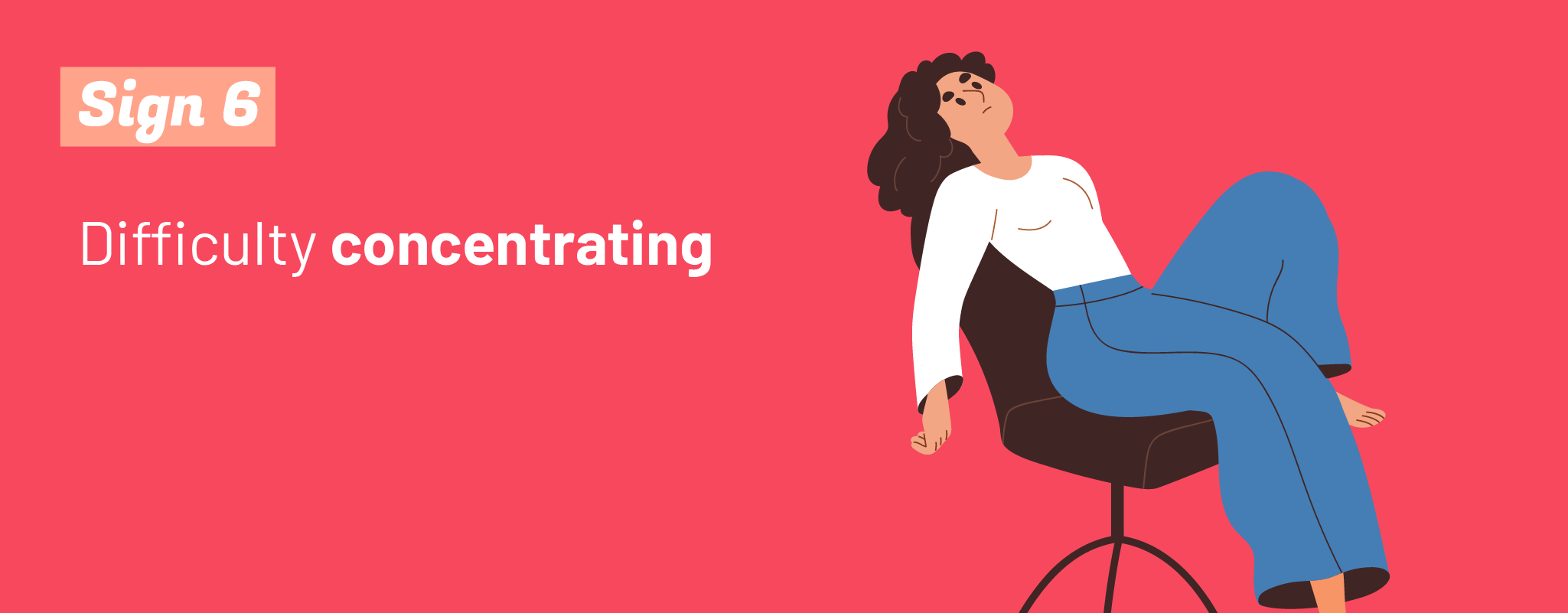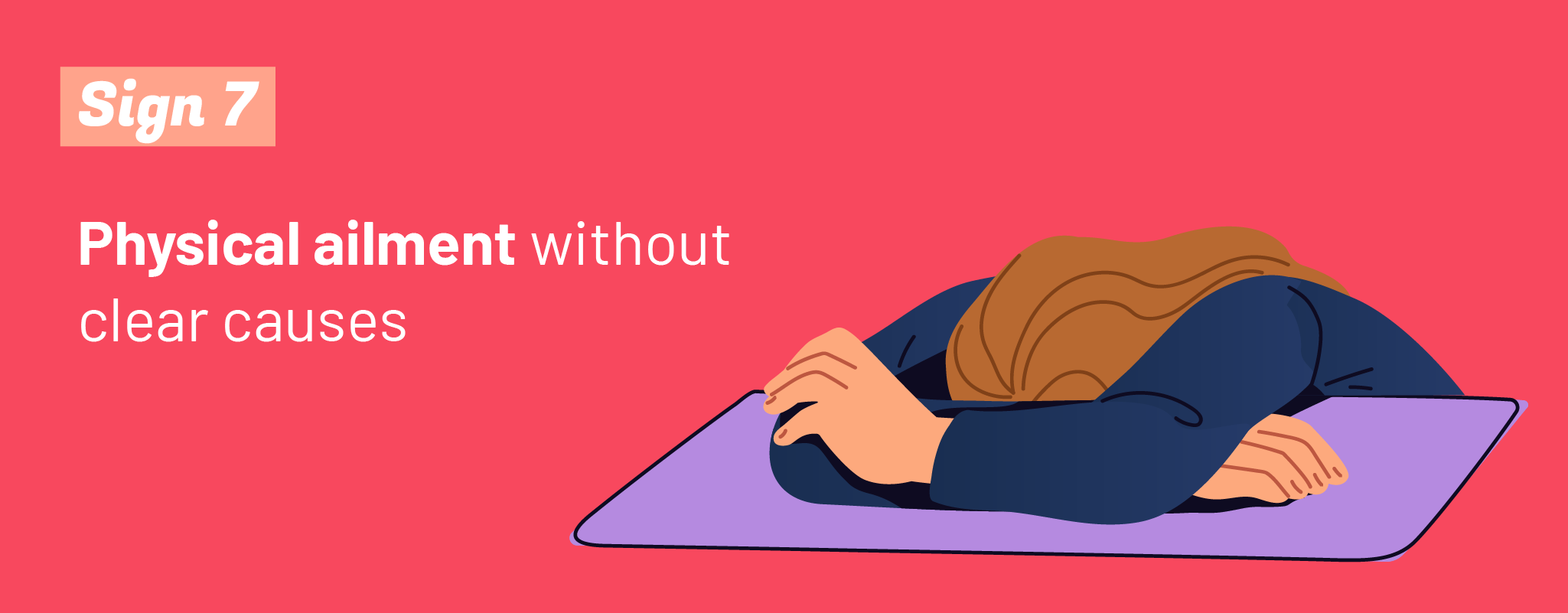Signs of depression in women: 7 key indicators

Depression is about 50% more common among women than among men1. The higher rate of depressive disorder in women is related to biological, hormonal and socio-cultural factors2. This also raises the scientific question of whether and how the disorder affects the two sexes differently in terms of frequency, intensity, and manifestation. There is some evidence of a small but significant difference3. Men tend to act more impulsively and take greater risks, they report higher rates of alcohol or substance abuse, and they are more irritable3. Women are more prone to mood-related symptoms, changes in appetite, body weight and sleep disturbances3.
7 Key Symptoms of Depression in Women You Should Know
Understanding the symptoms of depression in women is crucial for early detection and support. This infographic highlights the 7 key indicators to help recognize when it's time to seek help.
Sign 1: Persistent sadness and/or anxiety
Scientific evidence shows that mood-related symptoms are among the most common signs of depression in women. Women with depression are more likely to experience sadness, often pervasively3, as well as loss of pleasure or interest in activities and a feeling of emptiness2,3. Sadness can be associated with irritability and anxiety in both sexes2.

Sign 2: Feelings of worthlessness or guilt
In addition to sadness and apathy, there may also be feelings of powerlessness, uselessness or worthlessness1. These unpleasant emotions can be associated with a strong feeling of guilt and low self-esteem1.

Sign 3: Fatigue and decreased energy
Signs of depression in women can include more frequent and more intense metabolic and physiological symptoms, such as less energy, fatigue, lethargy and slower movement3. Depression can also cause a decline in libido, especially in women3.

Sign 4: Appetite and body weight changes
Depression can lead to increases or decreases in appetite and body weight3. Women can experience emotional hunger, which serves to suppress or dampen feelings of sadness, anxiety, emptiness and stress4. Depression associated with emotional eating increases the risk of obesity5.

Sign 5: Sleep disturbances
Several scientific studies show that there is a bidirectional link between depression and sleep, as depression can contribute to disturbances in rest and a lack of sleep can worsen depressive symptoms6.. People who do not get enough sleep or have poor-quality sleep have a higher risk of developing depression. At the same time, insomnia is itself a major symptom of depression7. Disruptions to night-time rest are more common in women3.

Sign 6: Difficulty concentrating
Cognitive issues can often go unrecognised as symptoms of depression in 8. These can include difficulty concentrating, memory problems, and a diminished ability to learn8. These symptoms can be reversed with treatment, though they can sometimes persist in milder forms, even after the bout of depression has ended9. This is why early diagnosis and intervention are crucial9.

Sign 7: Physical ailment without clear causes
Other apparently unrelated somatic symptoms could be an alarm bell, especially in cases associated with low mood or other signs10. Frequent headaches, digestive issues, muscle tension and chronic pain can be signs of underlying psychological distress10.

Forms of depression that affect women
It is important to remember that there are also specific forms of depression in women that can affect them at certain times in their lives2. These include peripartum depression and premenstrual dysphoric disorder, also recognized in the DSM-5-TR (Diagnostic and Statistical Manual of Mental Disorders, fifth edition); in addition there is perimenopausal depression, in the period leading up to menopause, and pregnancy-related depression2.
Women tend to be more affected by symptoms of severe depression that interfere with mood, self-worth, sleep and energy levels3. Both women and men can benefit from seeking help at the first signs of these symptoms, to enable better management of this disruptive health issue1.
References:
- World Health Organization (WHO), “Depressive disorder (depression)”, 31 March 2023
- National Institutes of Health (Nimh, NIH – Usa) Depression in Women: 4 Things to Know, 2023
- Cavanagh A., Wilson C. J., Kavanagh D. J., Caputi P., “Differences in the Expression of Symptoms in Men Versus Women with Depression: A Systematic Review and Meta-analysis”. Harvard Review of Psychiatry 25(1):p 29-38, 1/2 2017. | DOI: 10.1097/HRP.0000000000000128
- Mayo Clinic (nonprofit, Usa), Weight loss: Gain control of emotional eating, 2 December 2022
- Konttinen H., van Strien T., Männistö S. et al., “Depression, emotional eating and long-term weight changes: a population-based prospective study”. Int J Behav Nutr Phys Act16, 28 (2019). https://doi.org/10.1186/s12966-019-0791-8
- Yasugaki S., Okamura H., Kaneko A., Hayashi Y., “Bidirectional relationship between sleep and depression”. Neurosci Res. 2025 Feb;211:57-64. doi: 10.1016/j.neures.2023.04.006. Epub 2023 Apr 26. PMID: 37116584, https://pubmed.ncbi.nlm.nih.gov/37116584/
- Fang H., Tu S., Sheng J., Shao A., “Depression in sleep disturbance: A review on a bidirectional relationship, mechanisms and treatment”. J Cell Mol Med. 2019 Apr;23(4):2324-2332. doi: 10.1111/jcmm.14170. Epub 2019 Feb 7. PMID: 30734486; PMCID: PMC6433686, https://onlinelibrary.wiley.com/doi/10.1111/jcmm.14170
- Keller A. S., Leikauf J. E., Holt-Gosselin B., Staveland B. R., Williams L. M. “Paying attention to attention in depression”. Transl Psychiatry. 2019 Nov 7;9(1):279. doi: 10.1038/s41398-019-0616-1. Erratum in: Transl Psychiatry. 2020 Feb 12;10(1):64. doi: 10.1038/s41398-020-0748-3. PMID: 31699968; PMCID: PMC6838308, https://pmc.ncbi.nlm.nih.gov/articles/PMC6838308/
- Kriesche D., Woll C. F. J., Tschentscher N. et al., “Neurocognitive deficits in depression: a systematic review of cognitive impairment in the acute and remitted state”. Eur Arch Psychiatry Clin Neurosci273, 1105–1128 (2023). https://doi.org/10.1007/s00406-022-01479-5
- Jaracz J., Gattner K., Jaracz K., Górna K., “Unexplained Painful Physical Symptoms in Patients with Major Depressive Disorder: Prevalence, Pathophysiology and Management”. CNS Drugs. 2016 Apr;30(4):293-304. doi: 10.1007/s40263-016-0328-5. PMID: 27048351; PMCID: PMC4839032, https://pmc.ncbi.nlm.nih.gov/articles/PMC4839032/
